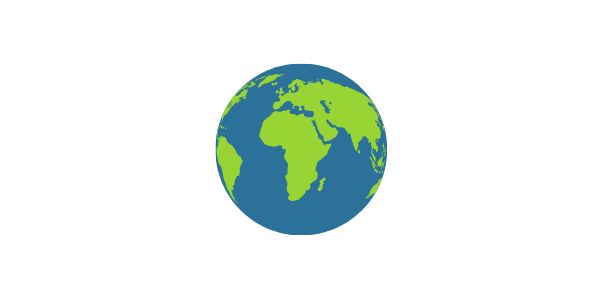World Language Collections: Growing With Our Communities

We are a global community but in many ways each library or system is working in a silo. Not only is each community different, budgets vary, politics vary, and staffing varies. Nevertheless, we are all asking the same general question “how does a library provide the best world language collection for their community with a given set of resources?”
At the end of 2022, I posted a survey on various listservs to determine how other libraries managed their world language collections, including selection, cataloging, and distribution. The majority of libraries across the U.S. that responded use demographic data from the census as their primary source for determining which non-English languages to provide to their community. Specifically, libraries use the American Community Survey which provides data down to the city level and is updated continuously. School district data, local surveys and need assessments, as well as patron attendance of English learning programs, are additional vital sources.
Diana Miranda-Murillo at the Austin Public Library in Texas says, “something that is not included in the demographic data is how people move in the city. For example, we might know that Spanish speaking people are not living around a certain area of town but they might work there. So, paying attention to data on where customers return materials [is important].”
Miranda-Murillo also suggests partnering with local cultural and refugee organizations for determining languages and types of materials. “For example, when I approached the Association of Ukrainians in Austin, I learned it is a community with families and small children so I added Ukranian materials that matched that profile.”
Once the languages are determined, choosing the materials within each language is challenging. Librarian selectors fluent in the language is ideal but not always possible. Many libraries rely on vendors, such as Tsai Fong Books and Multicultural Books and Videos, to supply a selection of world language materials using specific parameters, patron feedback, and continuous adjustments to get the best for their community.
Lana Harman from the Yolo County Library in Northern California says, “Standing orders were tried in the past but were unsuccessful as vendors are usually located in major cities and a) judge what my community needs by the needs of the community they live in; and b) unload slow-moving books on us.”
More and more libraries are hiring bilingual librarians, especially in the local predominant non-English language, which helps with purchasing as well. Bilingual selectors can also travel to various world book fairs, such as FIL Guadalajara, to get materials from smaller publishers and upcoming titles, as well as assess trends. Long Beach Public Library in California sends staff to Cambodia every 3-5 years to purchase materials in Khmer.
Alternatively, libraries like California’s Arcadia Public Library look at what other libraries in similar community demographics are purchasing. The Hillsboro Public Library in Oregon recently partnered with the library in their sister town in Japan to assess each other’s language collection and make suggestions for improvement.
“Local feedback” and “patron requests” in determining purchases were both common library responses in the survey, including the Benicia Public Library in California, Tigard Public Library in Oregon, Ann Arbor District Library in Michigan. For their smaller world language collections, Tigard Public Library and Long Beach Public Library also rely on donations.
Of course, due to monetary, selection, and staffing restrictions, not all languages can be provided (on location or through outreach). Ann Arbor District Library offers a small amount in 125 languages but only focuses on about 25 and Long Beach Public Library uses a similar methodology. Until receiving a grant from the California State Library, Benicia Public Library was only able to offer Spanish materials as an alternative to English. The grant allowed them to expand their world language collections to seven languages and have, since then, added two more.
Another alternative is limited languages in one area – such as adult materials – so the resources can be used more efficiently elsewhere. Youth materials are often less expensive and bilingual, so resources can go further. Some libraries, like the Multnomah County Library in Oregon, offer a greater number of languages for outreach books since they can be uncatalogued and have very little processing (both huge cost savings).
As our communities develop and diversify further, it is increasingly important for public libraries to provide quality world language collections. Ideally the availability and cost of materials from other countries will improve (as well as funding of course) but it is clear that collaboration is key, between libraries, vendors, and local organizations. Thank you to all of the libraries that responded to my survey for this article – I hope it leads to some amazing world language collection discussions and partnerships.












